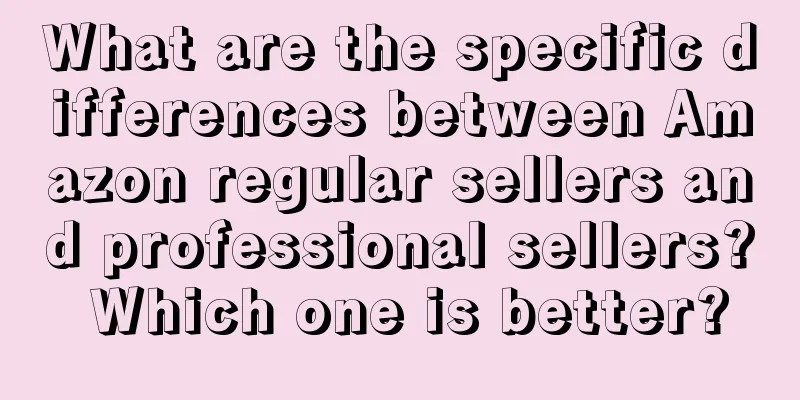Four Bulls That Will Drive Brand Growth in 2023

01In 2023, brands need to pull out several growth bulls to promote brand growth. Everything a company does must revolve around growth, whether it is strategy, brand, or marketing. Because once a company's growth stagnates, various problems will be exposed one after another, and a domino effect will occur. Once the growth domino falls, the company is likely to collapse instantly or be surpassed by latecomers. Therefore, both the country and enterprises attach great importance to the issue of growth. Recently, the country has continuously introduced a series of measures to stimulate the economy, with the aim of promoting GDP growth. Although it is not a growth-only theory, if China stops growing, a series of social problems will be exposed more thoroughly, and there will be more contradictions and conflicts in society. From the Party Central Committee to the State Council, the top leaders are trying every means to maintain growth. So how do enterprises achieve growth, and what elements constitute growth? 021. The first driving force of growth: productsThe value and price of the product itself are the first factors that determine growth. Whether consumers think you are worth buying and how much they are willing to spend on you are one of the first questions that users think of when making purchasing decisions. 2. The third driving force of growth: trafficTraffic is essentially user traffic. Creating content and placing ads on internet platforms such as Weibo, WeChat, and TikTok is to obtain traffic. Placing ads on Focus Media’s elevator ads is to obtain traffic. Advertising on the four traditional media is also to obtain traffic, including offline ground promotion activities, channel promotion, and customer visits. In the final analysis, they are all for the purpose of obtaining traffic. Only with customer traffic can there be transactions and conversions. The average customer price of a product multiplied by the number of users acquired by the company is the company’s revenue, and these two constitute the basis for growth. 3. The third driving force of growth: brand managementThe essence of brand management is to establish a relationship between a company's products and services and its customers. In the past dividend era, companies focused on purchasing traffic. Traffic was continuous, and it was relatively easy for companies to acquire customers, and the cost of acquiring customers was low, so they did not pay much attention to brand building and user operations. In the era of traffic dividends, the role of brands is not that important. As long as they are well-known, it will be fine. When CCTV had a traffic dividend, whoever advertised on CCTV would be able to sell goods quickly, and channel merchants would scramble for the brand. As the dividend disappears, the cost of acquiring customers is getting higher and higher. After acquiring each customer, whether the company can keep the customer, turn him into a fan and loyal consumer, achieve retention and repurchase, and even rely on him to attract new customers has become the key to marketing. This is not only related to whether the high cost of acquiring customers can be spread out, but also determines whether growth can be sustained. 4. The fourth bull of growth: trendWhether a corporate brand can keep up with, adapt to, or even guide the trend of social development and evolution determines the vitality of the company. Because only when a brand conforms to the trend of social development, consumption trends, and collective consumption psychology can it be accepted by society. In different eras, people's consumption habits and cultural behaviors will be different. Only by winning the recognition of a wide range of consumer groups can it achieve fission and diffusion at the social level and form a social trend. The ability of a company to adapt to changes in social ecological trends determines whether it can achieve exponential growth. 03If a company wants to achieve growth, it can either improve its products and product portfolio to increase the average customer price; or expand its distribution and scale to increase the number of customers; or improve user loyalty and manage customer lifetime value; or build its brand into a social and cultural trend and spread it out. In the end, there are only these few paths to growth. 04Growth depends first on product strength. The value of a product can only be presented in the user's life scenarios and application scenarios. Consumers experience products and feel the functions of products based on specific scenarios. In specific scenarios, consumers can understand what the product means to them and what role it plays in their lives. Therefore, the scenario determines the product's ability to realize cash. 05The second step of growth depends on marketing power. The marketing mentioned here refers to marketing in a narrow sense, that is, promotion and customer acquisition. For a consumer, whether he will become your customer depends on how he perceives your brand. And the key to cognition is labels. Labels compress all the complex product information and brand information of the company and present them to consumers in a concise manner, so that they can be quickly recognized and spread in the minds of consumers, thereby greatly reducing the company's marketing costs. Labels determine the efficiency of user cognition, and thus determine the efficiency of the company's customer acquisition. 06Finally, growth depends on user operation. In recent years, companies have increasingly emphasized community operation and private domain traffic. More and more Internet celebrity brands and new brands that have grown up on Taobao, WeChat, and Douyin have begun to focus on brand building and win customer recognition and loyalty. The reason has been mentioned before. The dividend has disappeared and the cost of acquiring customers is getting higher and higher, so users must be managed. 07The key to managing users well is social interaction. Only when companies establish social relationships with consumers can they establish long-term connections. Social interaction therefore determines the quality of user operations and the strength of brand relationships. Growth ultimately depends on social influence. According to the theory of innovation diffusion, a new product, concept, or practice needs to go through a process of dissemination among members of the social system in order to be accepted and adopted by the general public. It follows a pendulum curve. Innovation diffusion is a basic social process. If a company's products want to spread, become a phenomenal hit, and achieve brand success, the weapons are technology and culture. Especially today, the rapid development of the times, the constant changes in consumer groups, and the emergence of various technologies and media have caused a cultural rupture in society, which has created unprecedented cultural innovation opportunities for brands. If companies seize the power of this ideology, they will be able to achieve brand fission and diffusion and win a large number of consumer groups. Spread determines the degree of social diffusion. Based on these four major themes, we have obtained a standard formula for building a brand. 08The thinking model and logical steps for building a brand are to create scenes, label, socialize, and spread the word. 09The biggest marketing value of scenes is that scenes create demand. People's needs are generated in scenes. People will have different needs in different scenes, and scenes create demand. Different scenes have different pricing, and this is fundamentally because consumers have different needs and willingness to pay in different scenes. When you are in a bar and there is someone of the opposite sex waiting for you to meet, and your phone is out of power, would you use a power bank that costs 10 yuan per hour? For consumers, the value of power banks is obviously different in different scenes. 10The value of a scenario is to create demand and drive consumers to buy. Therefore, companies need to find the time and occasion that can best stimulate consumer demand and make consumers feel the value of their products. This is the definition of a scenario in the marketing context. Companies should also build scenarios for their products based on this. 11Scene design consists of two parts:
Experience is at the psychological level, and its purpose is to make consumers feel the value of the product and stimulate demand. Trigger is at the behavioral level, and its purpose is to remind consumers to take action and trigger purchasing behavior. Scene experience includes three levels: sensory, emotional, and meaningful. The first is what sensory experience the product brings to consumers, and how the value of the product can be "visualized" to consumers, that is, to let consumers see, hear, smell, taste, and touch the function and quality of the product. Feelings are real, and the value that can be felt is the real value. 12What emotions can the product be associated with? That is, the mood of the consumer when consuming the product, whether happy, peaceful, confident or assertive. Finally, what meaning does the product bring to the consumer, in terms of self-respect and realization, or in terms of group belonging. Senses, emotions, and meaning are the three levels of body, mind, and spirit. 13Scenario triggers include four major variables: timing, occasion, action, and frequency. These variables are all designed to answer how consumers should consume your product, when, where, how to consume and use it (consumption action and frequency). This is like adding the word "daily" in front of nuts. The "daily" reminder of consumption frequency has created a market worth tens of billions. A brand is the integration of consumers' experiences in a specific scenario. 14If you want consumers to buy your products, you must first tell them who you are, what you do, and how you are different from other similar products. This requires companies to deliver information to consumers, including product information and brand information. In this era of information explosion, just think about it and you will know that consumers are not short of information at all. If companies bombard consumers with a lot of information, it will simply add to their frustration and annoyance. What consumers really lack is not the ability to obtain information, but the ability to organize and absorb information. How to make disordered information orderly and how to simplify information. The biggest gap between people is no longer information asymmetry, but cognitive asymmetry. Cognitive poverty is a person's greatest poverty. 15What does information simplification ultimately lead to? Labels. Labeling is the way we perceive everything in the world, and it is a survival ability that we have evolved over the past millions of years. If companies want to achieve information symmetry with consumers, they should invest heavily in media advertising. If companies want to achieve cognitive symmetry with consumers, they should label their brands and consumers. The greatest marketing value of labels is to help companies lock in the "mental track". 16For example, in the field of convenient food, river snail noodles have now become a big track, second only to instant noodles, which is unmatched by other rice noodle products. However, why are the tracks wide and narrow? Why is the market size of Liuzhou river snail noodles much larger than that of Guilin rice noodles in the same rice noodle track? Why has the river snail noodle track been able to advance rapidly in recent years, leaping from a street snack to a national food? In fact, it is not that the product itself has changed, but that consumers' perception of river snail noodles has changed. The real track is not in the category, but in consumer perception. 17Branding is actually the process of labeling consumers. Companies should choose the most suitable cognitive label for themselves, determine the brand's identity and unique attributes, and thus find their own mental track, making it easier for consumers to know you, recognize you, and identify with you. The quality of a company's user operations is evaluated not by how much money consumers are willing to spend on the brand, but how much time consumers are willing to spend on the brand. Are consumers willing to like, comment, and forward your content? Are they willing to participate in your activities? Are they willing to watch your live broadcasts? Are they willing to join your community? Are they willing to speak up for you online and in interpersonal communication? 18Brands need to establish empathy with consumers and achieve resonance of discourse during communication. For toC, the greatest significance of a brand is empathy with consumers, while for toB, the main role of a brand is to provide trust endorsement. To establish trust, it is very important to build a discourse system shared with consumers. Let consumers speak out about the goodness of your product, so that you can establish user reputation, and this reputation may further develop into an industry standard, become an important basis for consumers in the industry to choose products, and even become public opinion, helping brands build social influence. Really good public relations is not for companies to spend money to find media to publish a bunch of soft articles and press releases, but for consumers to speak for you, and consumers to create content on major platforms to show off your products and give good reviews of your products. In this way, the words jointly created by users are more real and have more power to move people. Especially when a brand is facing a crisis, good crisis public relations cannot be separated from the support and support of fans. 19A concept invented by evolutionary biologist Richard Dawkins, from his brilliant book The Selfish Gene. The English word meme is modeled after the word gene, which means gene in social culture. Meme is a unit of cultural expression similar to beliefs, buzzwords, etc. It is copied and spread in social culture just like the role of genes in biological evolution. Of course, genes are copied through inheritance, while memes are copied through imitation. Gabriel Tarde, one of the three founders of French sociology, used the two factors of invention and imitation to explain all social life phenomena. He believed that human society is a cycle of invention, imitation, conflict and adaptation. Imitation is the most basic social relationship and the ultimate element of social behavior. Society is a group of individuals who imitate each other. Social relations are basically imitative relations. 20According to the innovation diffusion curve, how does a new product or brand become popular? In the end, it is just a small group of people who try the product first, and then the masses imitate it. Why do the masses imitate? Because of memes. So I personally understand memes as the motivation for imitation, and I understand the English word meme as the copying and transmission of words, ideas and behaviors from one me to another. Tarde therefore said that imitation is communication. The ultimate goal of a company's brand communication is to make consumers imitate the characters in the advertisement to buy and use the product. twenty oneProducts, traffic, brand management, and cultural trends are the four poles for achieving growth. Only by focusing marketing firmly around these four poles can we achieve certain growth in an uncertain environment. Author: Liu Yichun Source: WeChat public account "Liu Yichun's Brand Business Innovation (ID: shangyeyiguohui)" |
<<: How does funny blogger @丁郑美子 attract so many fans with dancing?
>>: Going to the big market, eating a big banquet, short videos show "the temptation to go home"
Recommend
Can Amazon raise prices before Black Friday? How big are the discounts?
Amazon Black Friday is a very large event, and man...
Where can I find Amazon product conversion rates? How can I improve them?
Amazon merchants need to promote their stores afte...
Why do reaction videos become popular when foreigners listen to Chinese music?
As reaction videos become more popular, people can...
What tools are there for Shopee e-commerce?
To operate a cross-border online store, you need t...
In the B2B industry, how to conduct analysis when there is a lack of data?
In the B2B business field, data analysis is a key ...
When Haidilao starts to "cheapen" service, can hotpot still be good?
One of the secrets to the success of all catering ...
With Xiaohongshu, brand marketing has entered the "individual era"
The operation of Xiaohongshu requires the manager ...
From 350,000 to 170,000, why did the prices of Mercedes-Benz, BMW and Audi all drop this year?
This article mainly analyzes the large-scale price...
How to settle in shein without a factory? What are the requirements?
Now many domestic merchants are going to settle in...
Digital People in the Colosseum: Can Technology Master the Violence of Traffic?
Why are digital people being suppressed by domesti...
How long does it take for Amazon to be linked? What are the consequences?
Amazon currently does not allow stores and account...
How long will Amazon limit traffic? What should I pay attention to when attracting traffic?
Amazon is a well-known cross-border e-commerce pla...
It’s 2024, here are some data-driven methods
In business competition, data has become the key t...
Is it illegal to freeze a bank card for foreign trade payment? What should I do if it is frozen?
When doing foreign trade, you need to understand t...
Alipay is cracking down on illegal rentals. What are the tricks in rental mini-programs?
Recently, Alipay has rectified illegal rental mini...









